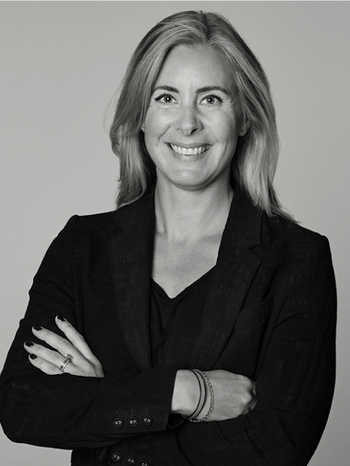Öyvind Fahlström
"Sur un poème d’Ilmar Laaban 2"
Executed in 1955. Triptych on glass, ink and cado 50 x 30 cm each. Including frame 73.5 x 122 cm.
Alkuperä - Provenienssi
Collection of Gies Pluim, acquired directly from the artist.
Bukowski Auktioner, Moderna Höstauktionen 517, 7 - 9 November 2000, lot 363.
Private Collection, Sweden.
Näyttelyt
Galerie R. Creuze, Paris, 'Phases de l’art contemporain', 31 March - 26 April 1955.
Kirjallisuus
'Gegeben sind Reuterswärd, Fahlström, Duchamp', Sprengel Museum, 2022, mentioned in the exhibition catalogue.
Jean-Francois Chevrier et al., 'Fahlström - Another Space for Painting', 2000, illustrated p. 85.
Muut tiedot
In the 1950s, Swedish critics showed little interest in the poet and visual artist Öyvind Fahlström (1928-76). Significantly, Fahlström's first solo exhibition took place in Florence, and his first poems were published in a French magazine. But this oversight had an important exception, Ilmar Laaban, the critic, poet and translator who was seven years older. Laaban's network of contacts in surrealist and modern artist circles in France greatly favoured Fahlström's future career. In the early 1950s they were both driving forces behind the avant-garde art magazine Odyssé, where Fahlström would publish his concrete manifesto. Laaban would write the first insightful analyses of his friend's art in the international press. In Expressen he characterised Fahlström as "an alien octopus in the hydrosphere of the Swedish 1950s, which is otherwise mostly populated by wistful aquarium lionfish and safe village perches... the ink he secretes has the blackness of genuine black humour without the watering down that the concept has undergone in recent years."
Fahlström and Laaban also collaborated artistically on several occasions. An initial collaboration took place at the exhibition “Paroles Visibles” in 1955, at Galerie La Roue, with the work "Sur un poème d'Ilmar Laaban 1", ink and cado on metal paper. At the exhibition, organised by Edouard Jaguer, 23 international artists created works alongside as many renowned poets. They also collaborated on the book project “Rrosi Selaviste” 1957, in which Fahlström returned to his image composition from “Paroles Visibles” and Laaban wrote poetic language games with clear references to Marcel Duchamp. The book with Fahlström's cover and illustrations was published in a signed and numbered edition.
The month after “Paroles Visibles”, they participated in the major international Phases exhibition “Phases de l'art contemporain”, Galerie R. Creuze, Paris, 31 March - 26 April. (Catalogue as a supplement in Phases no. 2, 1955.) Fahlström, who was given his own room at the exhibition, exhibited his 12 m long work Opera; the painting on metal paper from “Paroles Visibles”, as well as a new larger work, a triptych on glass: "Sur un poème d'Ilmar Laaban 2". In a letter home to his aunt, the artist writes: “I am residing in almost solitary majesty in a small room, with the long drawing [Opera], the metal paper painting, and the painting on glass, the latter delicately and effectively placed against the light in a stand.” (6/4, 1955)
Laaban's surrealist poem in German is inserted into the three glass discs of the picture.
DAS GELÄCHTER SCHLINGT SEINEN RÜSSEL UM DEN MAGEN DES LICHTS
IN DEN HOHLRAUM DES RÜSSELS STECKT DAS LICHT SEINEN RÜSSEL
DIE RÜSSEL KÜSSEN EINANDER UND DONNERN UM DIE WETTE
Fahlström experimented with many different techniques, and with the new cado pens (a type of marker) he could draw on both metal paper and glass.
In the 1950s, Fahlström worked on developing a “relationship-spinning sign painting”. He wanted to “create a repertoire of more or less definite sign forms whose functions ... are determined as I use them”. Often form elements were allowed to live on and emerge in later periods. In creating the triptych on glass, Fahlström has designed a set of 22 sign elements, each of which indicates a letter in the author's poem. The formal alphabet is linked to the alphabet of letters and the artist follows the same approach as in the painting on metal paper. It is these character forms that are rotated and modulated on the three glass discs. The detailed painting on the glasses is done in ink and cado pen, and the artist has followed the lines of an equally detailed model on the other side of the glass. In a separate figure sketch [see photo **], the artist has drawn the various constituent forms and the letter they carry in their beating hearts. It is not unimportant in this context to note that it is the same set of character forms that recur in the artist's well-known series of works “Ade Ledic Nander 1 and 2”, 1955 - 57. (See the artist's own character catalogue in the MACBA catalogue "Another Space for Painting", Barcelona, 2001, pp. 82 - 83.)
Text by Teddy Hultberg





























